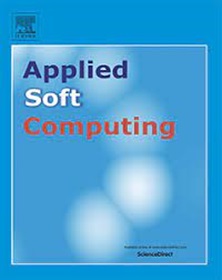Data-driven oil production strategy selection under uncertainties
IF 7.2
1区 计算机科学
Q1 COMPUTER SCIENCE, ARTIFICIAL INTELLIGENCE
引用次数: 0
Abstract
This study presents a user-friendly tool to assist in selecting oil production strategies when facing high levels of uncertainty in a real case. Specifically, we address the challenge of determining optimal well-bore positioning and control parameters under uncertain geological conditions, aiming to maximize production efficiency while managing computational complexity. The model deals with decision-making factors and geological data, represented by high-dimensional maps traditionally handled through intensive numerical methods. The production strategy goes through robust optimization based on decision variables in set , such as well-bore positioning, and uncertainties associated with 3D reservoir properties in set , such as porosity and permeability. The method combines two sets of variables, emphasizing positioning and control guidelines. The technique employs representative scenarios to find a generally applicable strategy considering mixtures. The variables describe a real and heterogeneous reservoir in the pre-salt area in Brazil. The method focuses on critical information through dimensionality reduction while guaranteeing faster, more accurate, robust decisions and balancing efficiency with effectiveness. We rely upon machine-learning, such as Gradient Boosting Regression with few-shot training strategies. The SHapley Additive exPlanations and feature importance allow the model interpretation, enabling us to understand how the well-bore positioning impacts the response. The method is integrated into the optimization loop to work alongside the simulator, and both methods work in tandem as a fast metaheuristic system supported by a slow numerical one. The method improves the computational footprint by 76%.
不确定条件下数据驱动的采油策略选择
该研究提供了一个用户友好的工具,以帮助在实际情况中面对高度不确定性时选择石油生产策略。具体来说,我们解决了在不确定地质条件下确定最佳井眼定位和控制参数的挑战,旨在最大限度地提高生产效率,同时控制计算复杂性。该模型处理决策因素和地质数据,这些数据由高维图表示,传统上通过密集的数值方法处理。根据P组中的决策变量(如井眼定位)和R组中与三维储层特性(如孔隙度和渗透率)相关的不确定性,对生产策略进行稳健优化。该方法结合了两组P变量,强调定位和控制准则。该技术采用具有代表性的场景来找到考虑P×R混合物的一般适用策略。变量R描述了巴西盐下地区一个真实的非均质储层。该方法通过降维来关注关键信息,同时保证更快、更准确、更稳健的决策,平衡效率与有效性。我们依赖于机器学习,例如使用少量训练策略的梯度增强回归。SHapley加性解释和特征重要性允许对模型进行解释,使我们能够了解井眼定位如何影响响应。该方法被集成到优化循环中,与模拟器一起工作,两种方法串联工作,作为一个快速的元启发式系统,由一个缓慢的数值系统支持。该方法将计算足迹提高了76%。
本文章由计算机程序翻译,如有差异,请以英文原文为准。
求助全文
约1分钟内获得全文
求助全文
来源期刊

Applied Soft Computing
工程技术-计算机:跨学科应用
CiteScore
15.80
自引率
6.90%
发文量
874
审稿时长
10.9 months
期刊介绍:
Applied Soft Computing is an international journal promoting an integrated view of soft computing to solve real life problems.The focus is to publish the highest quality research in application and convergence of the areas of Fuzzy Logic, Neural Networks, Evolutionary Computing, Rough Sets and other similar techniques to address real world complexities.
Applied Soft Computing is a rolling publication: articles are published as soon as the editor-in-chief has accepted them. Therefore, the web site will continuously be updated with new articles and the publication time will be short.
 求助内容:
求助内容: 应助结果提醒方式:
应助结果提醒方式:


